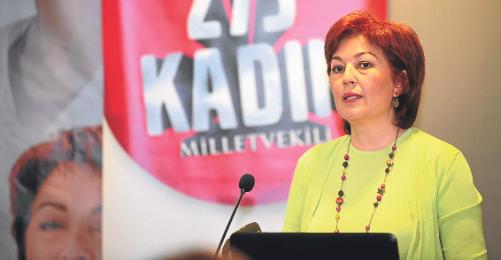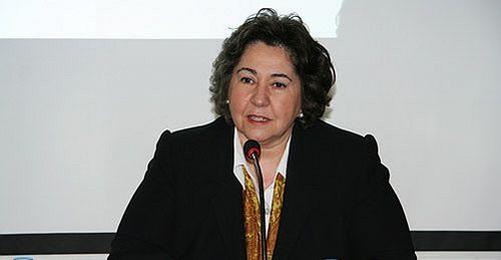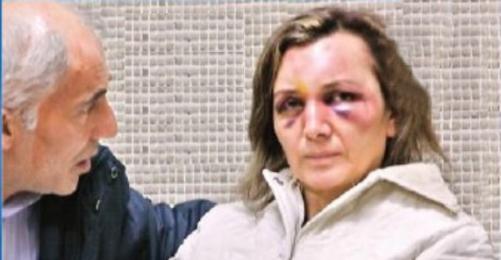Parliament speaker Bulent Arinc had sent off President Ahmet Necdet Sezer with his wife, who was wearing a headscarf. This incident caused discussions, with many circles saying, "The headscarf has gained admission into the government protocol."
According to Prof. Dr. Narli, this is "the demands of the vicinity being accepted in the center."
Associate Professor Dr. Sevda Alankus said, "This is actually the photograph of Turkey. Some people still do not see this as legitimate. This is turning into a funny game. This is Turkey. No one should take offense at this."
Narli: The demands of the vicinity have been carried into the center
"To be able to understand the disputes going on in the media about the headscarf issue, we first need to analyze the conflict between the center and the vicinity," said Narli.
She went on to explain the breakup process of the center, and the movement from the vicinity towards the center:
* "Civils, soldiers, bureaucrats , intellectuals, notables of society, and the industrialists-businessmen circles created by the state's support, make up the center. In Turkey, the characteristics of the center are transforming sociologically. The center started to break up in the 70s, and assuming a new sociological characteristic. The reason for this is the movement from the vicinity towards the center..." said Narli.
* The social groups that once made up the vicinity, gained geographic and socio-economic mobility, came to cities, and made up the middle-class that has just started to become urbanized. Those who transformed from commerce bourgeoisie to industrial bourgeoisie also moved to the center.
Faith, political demand and traditions
* And thus, this new circle brought along their demands with them, into the center. One of the demands of the people within this new circle, who place importance on religion, is that Islamic symbols and practices are exhibited in public. We may evaluate the headscarf issue within this framework. The headscarf carries different meanings for different people... Faith, political demand and traditions converge at this point...
* This demand, carried to the center from the vicinity, has always been rejected. This demand of the vicinity, of the people, who place importance on religion and want to express their religious identity, has found a place in the center through the Justice and Development Party (AKP). With AKP coming to power, we have started seeing the headscarf in the government protocol. It is being exhibited in public much more openly.
Headscarf is not the only symbol
* There are two different reactions against this. One of the reactions is, "Secularism is passing out of our hands, headscarves have gained access into the government protocol;" and the other reaction is, "The headscarf problem in Turkey is a very artificial problem. There are women who wear headscarves in Turkey. Nobody should interfere to another. This problem will soon be overcome."
* The headscarf is one of the religious symbols, but not the only one. The daily Cumhuriyet reported today on the headlines that "a prayer was held in Hilton Hotel." Women with headscarves now taking place in the government protocol, and holding prayers in Hilton Hotel, all relate to the fact that Islamic symbols have started to be exhibited in public places...
Alankus: Turkey's photograph is now visible
Discussing the fact that headscarves now gained access into the government protocol, associate professor Dr. Sevda Alankus said, "For believers, you cannot classify public places as places where you can or cannot wear a headscarf."
"For a believer, the headscarf is a vehicle to be out in a public place. If
you want to act in line with your beliefs, you have to go out into public wearing your headscarf. When you exclude the headscarf from the public places, you are also excluding the women," said Alankus. According to Alankus, it is hypocritical that there are no women with headscarves among AKP's deputies.
AKP's "uncovered" deputies
Alankus draws attention to these issues:
* From the moment we step out of our house, we are in a public place... Some students go into the classroom with a wig, and wear their headscarves when they get out of class. In this situation, you are also dividing public places into two: Places where you can wear a headscarf, and places where you cannot wear a headscarf... But for believers, such a division is out of question.
* None of the women deputies of the AKP wear headscarves. This is very hypocritical. The veterans of the party are different from the women on the party's shop window... What if women with headscarves were elected lawmakers? Would AKP be so much tolerated?
AKP wants a smooth transition
* AKP set out on the road thinking their wives with headscarves would remain on the backstage, and thus the headscarf issue would not get disputed over. I think they want a smooth transition in that regard. Now, they are advancing through their wives.
* Turkey's photograph is this, from now on. Actually, Turkey's photograph, that has been covered and ignored for years, is now visible.
* The fact that some people still don't find this legitimate is turning into a funny game. This is Turkey. No one should take offence at this. Maybe it will be a little difficult to get used to this. The ones who don't want to get used to the reality may try to preserve the situation.
Headscarf, foulard, or "no war" badge
* For example, some people may consider it a gain that the wife of the National Defense Minister does not wear a headscarf. But when you start trying to preserve the situation, you only talk about the "headscarves of ministers' wives." You start judging whether a minister or deputy from AKP is close to you or not, through his wife...
* They say that the "headscarf is a political symbol." Of course it is a political symbol. It is as political as everything. As political as the "no war" badge you wear on your shirt. But the fact that it is banned, makes it so sharp. Then, Bulent Arinc can get up and say, "I am the parliament speaker, out of sheer obstinacy,"... (BB/NK/EA/NM)











